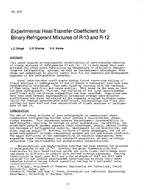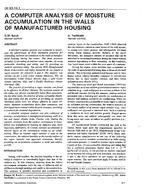Steam systems use the vapor phase of water to supply heat or kinetic energy through a piping system. As a source of heat, steam can heat a conditioned space with suitable terminal heat transfer equipment such as fan-coil units, unit heaters, radiators, and convectors (finned tube or cast iron), or through a heat exchanger that supplies hot water or some other heat transfer medium to the terminal units. In addition, steam is commonly used in heat exchangers(shell-and-tube, plate, or coil types) to heat domestic hot water and supply heat for industrial and commercial processes such as in laundries and kitchens. Steam is also used as a heat source for certain cooling processes such as single-stage and two-stage absorption refrigeration machines.
Advantages
Fundamentals
Effects of Water, Air, and Gases
Heat Transfer
Basic Steam System Design
Steam Source
Boiler Connections
Design Steam Pressure
Piping
Condensate Removal from Temperature-Regulated Equipment
Steam Traps
Pressure-Reducing Valves
Terminal Equipment
Convection Steam Heating
Steam Distribution
Temperature Control
Heat Recovery
Combined Steam and Water Systems
Commissioning
ISBN: 978-1-947192-52-2 (for I-P versions of chapters)
ISSN: 1078-6066 (for I-P versions of chapters)
Citation: 2020 ASHRAE Handbook — HVAC Systems and Equipment
Product Details
- ISBN(s):
- 9781947192522
- Number of Pages:
- 16
- Units of Measure:
- I-P
- File Size:
- 1 file , 830 KB
- Product Code(s):
- D-S112020IP


